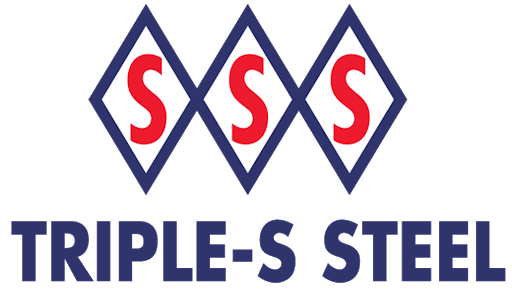



Steel is in practically everything. Manufacturers use steel in cars, buildings, and household appliances. It can be easy to confuse one type of steel with another. However, there is a difference between the steel tubing within.
You might be asking yourself, “Why does it matter if I know the different kinds of structural steel tubes?” Steel tubing isn’t wholly interchangeable. You may not be able to use one kind of tubing in the same situation as another. There is also a difference between steel tubing and steel piping. It’s imperative to understand the differences between these two items not to order the incorrect thing.
We will discuss the three types of structural steel tubes and the differences between mechanical and structural tubing. You’ll also learn what structural steel tubes are for and the difference between steel pipes and tubes.
There are three types of steel tubes for various manufacturing purposes. Carbon, stainless, and alloy steel are the main kinds of tubing, and each has its advantages. The type of tubing you use depends on the application.
You’ll often see carbon steel tubing as part of machine parts. Carbon steel has a high carbon content and is more durable and rigid than stainless steel. Carbon steel is also among the less expensive kinds of tubing. Carbon tubing has the widest variety of outside diameters (sizes) and thicknesses. But carbon tubing does have its drawbacks, though. This kind of steel is prone to rusting over. Carbon steel doesn’t have anti-corrosion properties and can deteriorate even in slightly moist environments.
Stainless steel is the opposite of carbon. Whereas carbon has the advantage of durability, stainless steel (or inox steel) is highly rust-resistant. Because of this, stainless steel works best in corrosive environments.
Alloy steel is steel combined with carbon and other elements like silicon, copper, and tungsten, to name a few. Alloy steel piping is the most versatile as it’s as durable as carbon steel and the corrosion resistance of stainless. There are two types of alloyed tubing: heat-treated and annealed. Heat treating is when heat strengthens and increases the metal’s impact resistance. Annealing is the act of softening metal.
Tubing can get confusing, and people often use terms interchangeably. That said, there are vital differences between kinds of piping. We’ve put together a little guide of what distinguishes mechanical from structural tubing.
Manufacturers make mechanical steel tubes for explicit purposes. Mechanical tubes are often uniform and adaptable for various purposes. You can order “standard” sizes, but more often, they’re made for specific measurements. Mechanical tubes come in four different shapes. You can purchase square, round, rectangle, round, and customized tubes.
Mechanical tubes have much more varied uses than their structural counterparts. For example, many household appliances and greenhouses use this tubing. Conveyor belts and trailers contain mechanical tubes also.
Structural tubing is used for structural applications. Structural tubes come in standardized strengths, so it’s easier to choose the right kind of tube for the job. Structural tubing is also called hollow structural sections (HSS). Structural steel tubes aren’t customizable. You can purchase square, rectangle, and round-shaped tubes.
Structural tubes are for high-stress applications (structures prone to strain from use and surroundings). Construction teams use structural steel tubes in buildings and bridges. You can find structural tubes in cranes and towers too. Sign supports, poles, and off-shore production and drilling platforms also use these structural steel tubes. Roll-over protection structures (ROPS) use this steel tubing to prevent injury from tractors and motorcycles.
You’ve probably heard the terms “tube” and “pipe” used to describe the same things. Some people may say that a pipe is a tube and vice versa. As it turns out, this is not the case.
Pipes and tubes share similarities; both can be welded, seamless, or rounded. There are significant differences between these two manufacturing materials, though. Tubes are round, rectangular, oval, and square-shaped.
Pipes are only round. They are also hollow and primarily for transporting substances from place to place. Think of sewer pipes underground as an example. Pipes are good shielding for electrical wire too. Pipes are an excellent construction medium, but you’re more likely to use tubing for most industrial needs. Pipes would make a decent bicycle frame, but you wouldn’t use them to reinforce a bridge’s structure.
Tubing premieres heavily in transportation and medical applications also. The metal on hospital gurneys is piping. The handrail you use on the public bus is piping as well. Pipes have an outer diameter (OD) and wall thicknesses (WT or schedule). To determine a pipe’s inside diameter (ID), you would subtract two from the OD and multiply it by the pipe schedule.
It’s essential to know a pipe’s inside diameter because that’s what tells you how much liquid it can hold. Tubing dimensions are more straightforward. All you need to know is a tube’s OD and wall thickness.
There are generally three structural steel pipes, carbon, stainless steel, and alloy. Carbon is the toughest but more prone to rust. Stainless steel is more corrosion-proof but isn’t as strong as carbon. Alloy steel has the best qualities of both carbon and stainless steel. Alloyed steels have higher corrosion resistance and are made to last. However, carbon has the advantage of being the less expensive of the three.
Insel Steel West can supply you with quality structural steel tubing. We’ve got many kinds of structural steel tubes and deliver them across the entire Western United States. Contact us today for assistance!